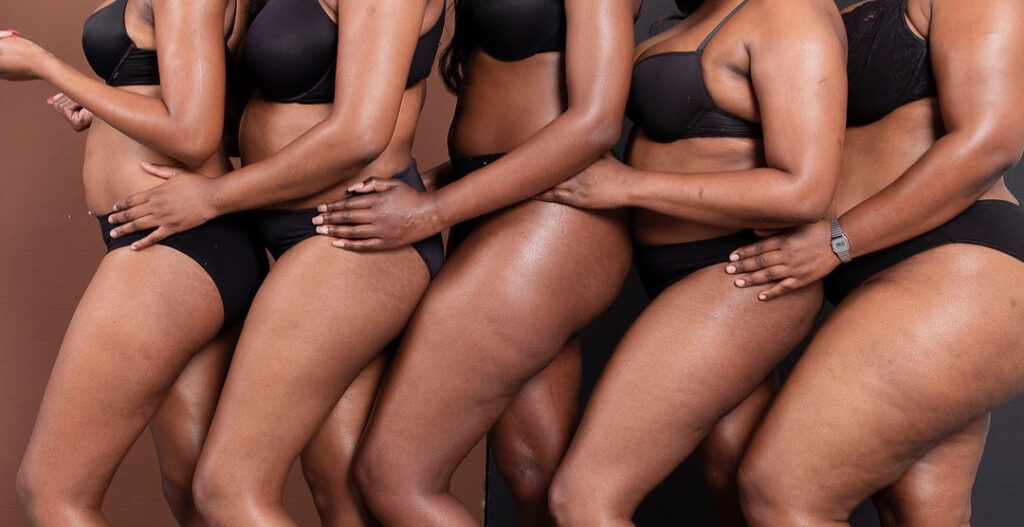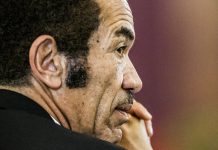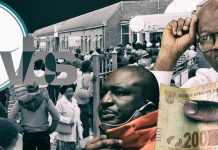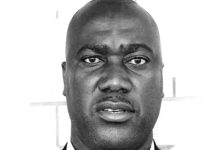By Sonja Smith | 10 September 2021
“NO one wants to look old, and those people who say they like their wrinkles are just lying. I mean, who wants to be old and wrinkled before their time?”
This is the response of a 37-year-old former model who books herself into a plastic surgeon’s office for an injection every third month to make her face look “smooth and young”.
She pays N$3 000 per session to be injected with botulinum toxin (botox) to prevent her facial muscles from contracting, causing wrinkles.
“Having two babies, I do not have the time to spend hours on caring for my skin.”
The woman initially agreed to be named, but later changed her mind as she fears being stigmatised.
Her story is not unusual.
Many Namibians regularly spend tens of thousands of dollars on cosmetic surgery and procedures.
“I have been doing botox since I was 24. If you wait until you have wrinkles, it will cost you more, as you then have to do botox as well as fillers,” the former model says.
The Ministry of Health and Social Services recorded 112 cosmetic surgeries performed in 2018/19, 119 in 2019/20 and 127 in the 2020/21 financial year.
Namibia’s cosmetic product imports have averaged from around N$400 million to N$500 million a year since 2015.
This brings the total amount spent on the importation of beauty products to around N$3 billion in the last five years.
Namibians’ cosmetic needs range from wrinkle removal, breast reductions, tummy tucks, anti-aging procedures and skin firming to vaginal rejuvenation.
The aforementioned involves vaginal tightening to improve intimacy.
Botox injections and breast surgery are among the two most popular procedures.
Helen van Rensburg (67) from Windhoek says she has been receiving botox injections for more than 10 years.
She says it improves her face and boosts her confidence.
“I don’t spend more than N$5 000 to N$7 000 a year on the treatments,” Van Rensburg says.
IV DRIPS
Not all treatments are voluntary, nor are they limited to women.
Intravenous (IV) vitamin drips are currently popular and widely advertised.
“IV vitamin therapy is meant to help your body restore and recharge. The benefits are numerous: immune support, stress reduction, an even tone and clearer, smoother skin,” says Windhoek-based Younique Medi Spa & IV Clinic in an advertisement on their Instagram page.
In the celebrity world, hooking up to a vitamin drip is common.
It may not be backed up by rigorous scientific evidence, but this hasn’t stopped Namibian socialites Maria Nepembe, Robyn Nakaambo, and Pombili Shilongo.

Media personality Paul Da Prince and even businessman Toivo Nuugulu have shared pictures of themselves on their social media pages receiving IV vitamin treatments.
Namibia’s who’s who and others are regular clients at a Younique Medi Spa & IV Clinic, where they receive ‘skin-glowing treatments’.
More recently, Nepembe posted a picture of herself on an IV drip on Instagram, saying “the fear of the needle is real outchea!!… But I had to put on my big girl panties and get that IV drip”.
The drips cost N$980 per session and takes 30 minutes to administer.
The clinic declined an interview with The Namibian.
Da Prince says he opts for the drip to help him restore nutrients.
“I do the immune booster for its rejuvenation purposes. I have a busy lifestyle, and sometimes my diet isn’t as balanced as it should be. I even miss meals often,” he says.
Medical research suggests that IV vitamin therapy could assist people with digestive disorders preventing the proper absorption of nutrients.
However, medical experts around the world have warned that if IV vitamin therapy isn’t prescribed by a doctor for a specific condition, it’s unnecessary and could even be dangerous.
In 2018, Hollywood star Kendall Jenner was hospitalised after an adverse reaction to a ‘Myers cocktail’ IV drip.
In the same year, the US Federal Trade Commission charged a chain of IV cocktail clinics for making false and deceptive claims that their products, including the Myers cocktail, could treat serious conditions like cancer, multiple sclerosis, and congestive heart failure.
The commission said the claims could not be supported by “competent and reliable scientific evidence”.
UNWANTED ATTENTION
In March this year, a year after she gave birth to her son, Carlen Rittman (25) from Swakopmund had a breast reduction.
She says she needed the surgery because she experienced constant back pain.
But this was not the only reason – Rittman says big breasts came with unwanted attention from men.
“I have always had big breasts, but they got a lot bigger after my baby’s birth. As a teen, I injured my back and suffered from a slipped disc in my spine. This gave rise to constant back pain. As my breasts grew bigger, so did the frequency of my back pain,” she says.
Rittman paid N$17 000 for smaller breasts.
She wore a size 40F bra and now wears a 38C.
She says the unwanted attention has left her shy and has reduced her confidence.
EXPERTS
For decades, Namibia has had only three plastic and reconstructive surgeons: The Indian-born Dr Sonia Pandey at Welwitschia Hospital at Walvis Bay, the Cuban-born Dr Caridad Lopez San Luis at Medipark at Ongwediva, and the Windhoek-based Susan Kruger.
Kruger, who has been practising for 21 years, says her work is “to fulfil parts that have fallen apart”, while others are “pure plastic surgery”.
“The beauty part of surgery is the cosmetic one. Here we do a lot of botox injections, we do fillers. I do facial surgery, such as face lifts. We also do blepharoplasty, where you remove the excess skin from the upper and lower eyelid,” Kruger says.
Her clients include men and children.
Her practice sees around 60 new patients every month, and between 10 and 20 follow-ups.
“I do breast enlargements and reductions, we do breast reconstruction for cancer surgery patients. I do tummy tucks for all the women who have had three to four babies, and who have a lot of excess skin. I also do bisections for saddle bags or whatever fat one has and doesn’t like very much,” Kruger says.
Her office greets clients with posters of a number of babies born with congenital abnormalities and cleft lips she has operated on.
She is reluctant to talk about her fees and says they are evaluated by the Namibian Association of Medical Aid Funds.
“But for the cosmetic part, you can actually ask what you want. There are no guidelines,” she says.
Kruger says patients’ concerns range from the shape of their faces to frown lines and the size of their breasts and buttocks.
“Those who come for breast reductions complain about severe backache, they can’t exercise, and they can’t stand for a very long time. But those who come for breast enlargements are cosmetic – they don’t like them, they have low self-esteem, and some don’t feel like a woman,” Kruger says.
RISKS
While society piles the pressure on women to look like cover models, Kruger warns of the dangers of cosmetic surgery.
“The pure cosmetic stuff is non-invasive in a sense. If a client gets his or her injection then the frown will disappear within five to seven days and it will look better, so there is no real danger in that compared to surgery,” Kruger says.
But she says she recently saw a patient who wanted bigger buttocks.
“I told her no, I don’t do that.”
Kruger cautions clients to be well informed about the risks and complications of each surgical procedure.
“There is always a risk, even if it is just the anaesthetic, because you can’t always tell if a patient is going to have a complication,” she says.
OVERSEXUALISED
At the age of 16, sick of being oversexualised by men and boys, Laura Uuyuni decided to go under the knife to reduce her breasts.
Uuyuni, now 21 and a clinical psychology student at the University of Namibia, says her chest was so big that she could not see her thighs or belly button.
The procedure cost N$40 000.
“The mental complications were that I felt out of place being a 14-year-old wearing a D-cup bra. It’s a big struggle to deal with being oversexualised, not just by young boys, but also grown men,” Uuyuni says.
Windhoek surgeons refused to take her case and told her she was overweight, she says.
Her breasts were also affecting her health.
She says she suffered a condition called pneumothorax that occurs when air is trapped in the space between the chest wall and the lungs.
“When I slept, my breasts would suppress my lungs,” she says.
Uuyuni says her breast reduction also led to an identity crisis.
“When you go through something like this, you lose a part of yourself. I need to get used to the new me,” she says, adding that plastic surgery is misunderstood.
“Plastic surgery is not always about beauty. It can transform someone’s life. People think it is about wealth, but I would like to think it is about self-care.”
Uuyuni says she is happier now.
‘I CAN LIVE WITH ONE BREAST’
Sylvia Markgraaf from Rehoboth says after her left breast was removed 13 years ago because of cancer, she underwent plastic surgery to replace it, because she felt unhappy.
“I was 48 years old at the time and it was terrible. I always felt like I was half a woman,” Markgraaf says.
The new breast cost her N$48 000.
However, with the plastic surgery came complications, and Markgraaf is now contemplating having her reconstructed breast removed.
She says while the surgery renewed her confidence, it left her with continuous pain in her left arm.
“The doctors had to take a muscle from my back to do the implant. Sometimes I feel like I can’t use my arm properly due to the pain.
“I feel like at a later stage I’m going to have it removed. I’m old now and it’s safe to say I can live with one breast.”
NON-SURGICAL PROCEDURES
Some women opt for non-surgical procedures.
Taimi Amakutuwa (33) from Oranjemund runs Namibia Body Sculpture, an establishment many Windhoek women visit for buttock lifting, breast lifting and hip dips.

Amakutuwa says she started her business after seeing a gap in the market for non-surgical procedures.
“These treatments are non-invasive. We do not make any cuts or incisions to the body, so the side effects are minimal. During the treatments one may experience some warmth or a small level of discomfort, which usually disappears after the session,” Amakutuwa says.
While clients’ concerns vary, Amakutuwa says most want “to look and feel better”.
Actress Tjuna Kauapirura has been going for body sculpture treatments for a year.
“The stomach area tends to be too flabby. I have two children. I needed it to tighten up my stomach area, burn the fat around that area,” Kauapirura says.
TIGHTENING
Other people opt for anti-ageing treatments, skin firming and vaginal treatments.
One such practice is run by Dr Jonathan Joffe and beauty therapist Nadja Horsthemke.
Horsthemke says two thirds of their clients are women and one third is men.
“The weekly volume of our clients is 55, 130 per month and around 3 000 a year,” Horsthemke says.
She says vaginal rejuvenation treatments are done to solve age-related problems, such as a lack of vaginal tightness, and to improve intimacy.
“This is especially for women with three or more children and who have had natural births. During that period the muscle surrounding the vagina tends to loosen up,” Horsthemke says.
This treatment costs N$4 000 a session or N$20 000 for six sessions.
Joffe says some risks are associated with injectible dermal fillers, another popular treatment.
If it enters arteries it can be dangerous, and another risk is that it could cause blindness, he says.
“But if procedures are done correctly by medical professionals, this can be avoided,” Joffe says.







